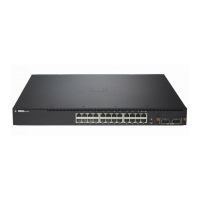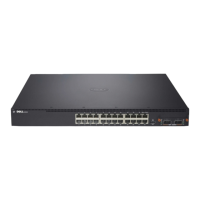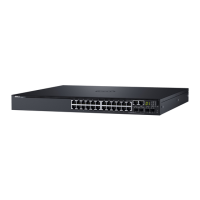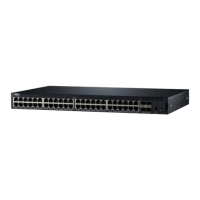Configuring Link Aggregation 821
Series switch or the external switch could go undetected and thus cause
undesirable network behavior. Both static and dynamic LAGs (via LACP) can
detect physical link failures within the LAG and continue forwarding traffic
through the other connected links within that same LAG. LACP can also
detect switch or port failures that do not result in loss of link. This provides a
more resilient LAG. Best practices suggest using dynamic link aggregation
instead of static link aggregation.When a port is added to a LAG as a static
member, it neither transmits nor receives LACP PDUs.
What is LAG Hashing?
PowerConnect 7000 Series switches support configuration of hashing
algorithms for each LAG interface. The hashing algorithm is used to
distribute traffic load among the physical ports of the LAG while preserving
the per-flow packet order.
The hashing algorithm uses various packet attributes to determine the
outgoing physical port.
The switch supports the following set of packet attributes to be used for hash
computation:
• Source MAC, VLAN, EtherType, and incoming port.
• Destination MAC, VLAN, EtherType, and incoming port.
• Source IP and Source TCP/UDP port numbers.
• Destination IP and Destination TCP/UDP port numbers.
• Source/Destination MAC, VLAN, EtherType, and incoming port.
• Source/Destination IP and Source/Destination TCP/UDP port numbers.
• Enhanced hashing mode
Enhanced hashing mode has following advantages:
• MODULO-N operation based on the number of ports in the LAG.
• Packet attributes selection based on the packet type. For L2 packets,
Source and Destination MAC address are used for hash computation. For
IP packets, Source IP, Destination IP address, TCP/UDP ports are used.
• Non-Unicast traffic and Unicast traffic is hashed using a common hash
algorithm.
• Excellent load balancing performance.
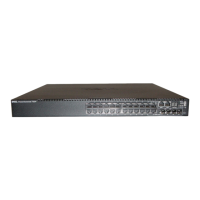
